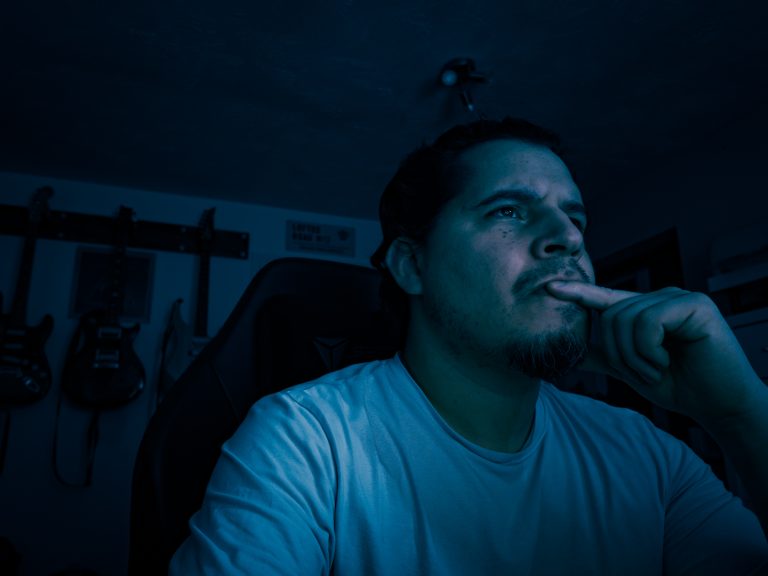I was officially diagnosed with ADHD this week.
After years of reverse-engineering my own brain — building systems, scaffolds, and workarounds just to stay on course — I finally have a name for what I’ve been wrestling with. It’s a strange kind of relief: part vindication, part vertigo. For every mystery it solves, another one opens up.
I’m not ashamed of the label, and I don’t feel like I need to be rescued from it.
What unsettles me is the world’s habit of treating diagnosis as definition — as if the shorthand explains the story. I worry less about casual perceptions and more about the quiet recalibration that happens when people hear the word ADHD: the soft downgrading of credibility, the gentle filtering of expectations.
Writing this piece isn’t therapy; it’s reclamation. It’s how I process the data of myself — not to justify the label, but to own the frame before it owns me.
Because my brain is not a buzzword, and neither is yours.
Scenario: The Checkbox
Situation
A senior talent manager scrolls through the final shortlist. The applications are strong — polished portfolios, tight cover letters, measurable results.
One form catches her attention: an accomplished candidate who, in the equal opportunities section, has ticked Yes beside Disability / Neurodiversity.
Impact
She pauses longer than she means to. Not out of malice, but because the checkbox has changed the calculus.
Her cursor hovers. She tells herself she’s being objective — that hiring is about alignment, not charity.
Tension
In the logic of corporate empathy, difference is celebrated only when it’s decorative. Disclosure, though encouraged, still carries the risk of quiet exclusion.
Approach
She clicks “Reject candidate” which triggers the polite, boilerplate response: legal-safe phrasing, empathetic in tone. No one will question it.
The system will log another “regret” email, another invisible act of risk management disguised as meritocracy.
Resolution
By the end of the day, her inbox is clear. She feels efficient.
The checkbox was a digital whisper of the candidate’s courage met with institutional caution.
Of course, I don’t know what really happens on the other side of that screen. I can only imagine how a ticked box lands, how disclosure filters through the quiet machinery of bias and risk.
Maybe it makes no difference at all. Maybe it changes everything.
What I do know is the internal echo it leaves — the second-guessing that creeps into every email, meeting, or interview. It’s the same quiet anxiety that’s shadowed me for years: the fear of being interpreted rather than understood.
And now, with a diagnosis attached to my name, that fear has found a sharper focus. I don’t want people to mistake quirks for symptoms, or conviction for compensation. My worry isn’t that I’ll be labelled — it’s that the label might start speaking louder than I do.
Nothing’s Changed, but Everything Might
The diagnosis didn’t rewrite my identity. It didn’t trigger an epiphany or redraw the map of who I am. If anything, it confirmed what lived experience had already made clear. The frameworks I’ve built to stay focused still stand; they’re evidence, not anomaly.
What has shifted is anticipation — the subtle recalibration of how I imagine others will now frame me. Until the label is invoked, it sits quietly, waiting for context. I’m aware that for some, diagnosis becomes transformation. For me, it’s recognition — a mirror held up to methods that already worked. Yet recognition changes optics: the same behaviour, once “disciplined” or “driven,” may now be read as symptomatic.
That tension sits at the heart of the Neurodiversity Paradigm — the idea that neurological difference is diversity, not deficit. It invites inclusion without dilution, acceptance without assimilation. I recognise myself in that philosophy. Nothing inside me has changed, but everything around me might.
The Grammar of Being Understood
I’ve never been shy about discussing ADHD. Long before it was official, I spoke about it openly — part candour, part curiosity, part cultural necessity. A touch of British self-deprecation helps; humour softens what people fear they don’t understand. But beneath the levity sits a quiet frustration: the endless tide of commentary from people who have never lived a day inside this kind of brain.
Rage-bait pundits, pop-psych podcasts, and workplace awareness weeks all frame neurodiversity through a mix of sympathy and spectacle. They’re not trying to be cruel — just certain. And certainty is the enemy of understanding.
I’ve come to see writing as my form of Lived-Experience Ethnography — a way of studying my own systems, reactions, and survival patterns from the inside out. Observation, reflection, iteration. It’s not research in the academic sense, but it serves the same purpose: turning lived reality into insight.
Every article, every framework, every late-night note on how I work is data — evidence that chaos can be studied, not tamed. (Incidentally, I am writing this at 1:30am).
If there’s a grammar to being understood, it begins with refusing to let others translate you. I’d rather be imprecisely authentic than perfectly misrepresented. Because language, like identity, only works when it’s co-authored.
Upgrading the Scaffolding
I’ve spent years constructing my own infrastructure for focus — scaffolding built from trial, error, and a stubborn refusal to collapse. Now, with a diagnosis in hand and access to professional guidance, the question isn’t whether those systems still work. It’s how to integrate new knowledge without eroding what already does.
Experience has taught me that doctors, like algorithms, can only process the data they’re given. The story I tell determines the help I get. That’s where Framing Theory comes in: the real power of language isn’t persuasion — it’s precision. I no longer enter appointments as a passive recipient of care but as an active narrator of my own case file. I know what’s fragile, what’s functional, and what needs tuning. I don’t want replacement; I want augmentation.
If my past has been a series of resurrections, this next one will be no different. Failure, recalibration, resurgence — it’s a familiar cycle. But this time, the frame is clearer. I can finally distinguish between character flaws and chemical facts, between chaos and circuitry. The work now is not about fixing a broken system, but refining a complex one — upgrading the scaffolding without dismantling the architecture it’s held up for years.
Conclusion
I didn’t write this to announce a diagnosis. I wrote it to reclaim a narrative. ADHD may describe how my brain works, but it doesn’t define how I live. The distinction matters — for me, and for anyone navigating a world that loves a label more than it loves nuance.
What I’ve learned is that the story you tell about yourself is the system you build around yourself. Every framework, every reflection, every moment of transparency is a form of design — one that others can learn from even if their wiring is different. My brain may be atypical, but the pursuit of understanding it is universal. We all want to feel seen for what we contribute, not categorised for what we contain.
So if there’s a takeaway here, it’s this: clarity is not confession. Owning your frame — whether it’s called ADHD, anxiety, or simply being human — isn’t about seeking permission. It’s about precision, empathy, and intent. Because when language is used to connect rather than to confine, it doesn’t just describe who we are. It helps us build who we become.
Strategic Markers
Precision over Permission
-
Labels can clarify, but they can also calcify.
Language should describe potential, not prescribe limitation. -
Diagnosis is context, not conclusion.
It explains patterns; it doesn’t dictate outcomes. -
Self-engineering is not defiance — it’s design.
What begins as survival can mature into strategy. -
The system only sees what the story tells it.
Frame your narrative with intent, or someone else will do it for you. -
Certainty masquerades as understanding.
True comprehension requires curiosity, not confidence. -
Clarity is not confession.
Owning your frame isn’t about seeking approval; it’s about setting direction.




